Are you part of an Australian patriotic organisation, aiming to rally your community around shared values and national pride? If so, you likely understand the importance of having a diverse array of flags to fulfil your mission. These flags serve not only to promote Australian pride but also to symbolise your organisation’s values and objectives.
Each flag, from the Royal Australian Air Force ensign to the iconic Australian National Flag, carries its own meaning and significance, representing different aspects of the country’s identity and history. If you are wondering which options you might need, here are 5 types of flags to help your organisation showcase its patriotism and values effectively.
Ensigns
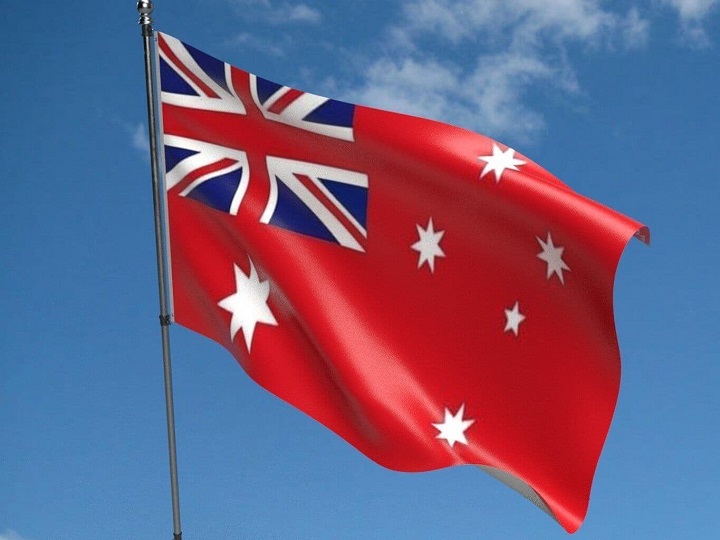
An ensign, once used solely as a flag to represent a ship’s nationality when flown at the stern, has transformed its meaning. It now encompasses flags flown by government services on land, expanding its significance beyond maritime settings. Patriotic organisations may find these flags essential for proudly displaying their allegiance and values, whether on land or at sea.
Australian Defence Force Ensign
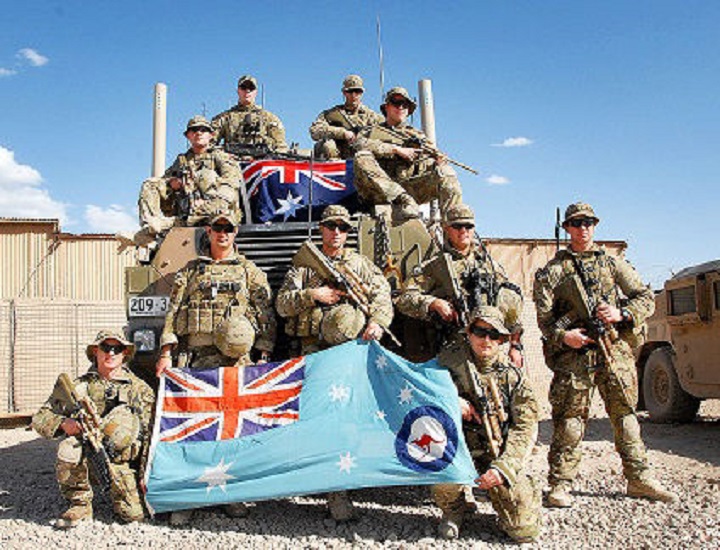
The Australian Defence Force Ensign, symbolising the unity of the Defence Force, serves as a powerful testament to the nation’s military strength. If you seek to symbolise the unified strength and commitment of the nation’s military branches you can order an Australian Defence Force Ensign. Whether for official ceremonies, patriotic displays, or personal collections, the ADF Ensign embodies the nation’s cherished values of honour, service, and protection.
The emblem at the heart of the flag symbolises the three branches of the defence force: the crossed swords denote the army, the anchor signifies the navy, and the eagle represents the air force. Additionally, the Commonwealth Star and the boomerang stand as symbols of the country’s identity and heritage. The red stripe stands for the Australian Army, the dark blue for the Royal Australian Navy, and the light blue for the Royal Australian Air Force.
Red Ensign
The Red Ensign shares identical design elements with the Australian National Flag, also known as the Blue Ensign, differing only in the background colour, which is red instead of blue. The Australian Red Ensign is typically reserved for use at sea by Australian-registered merchant vessels or on land during ceremonial events like Merchant Navy Day by organisations and individuals. Its vibrant red background, adorned with the Union Jack and the Southern Cross, pays homage to the nation’s maritime history and enduring traditions.
Navy Flag (White Ensign)
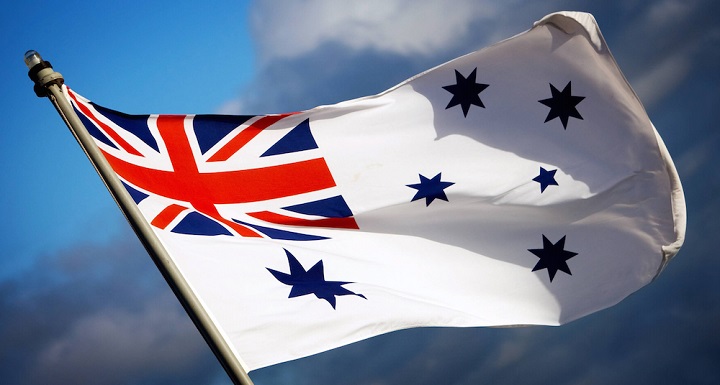
The Navy Flag, commonly known as the White Ensign, is a symbol of the Royal Australian Navy’s proud heritage and operational authority. It is flown exclusively by Australian Navy vessels, representing their sovereign power and allegiance to the nation. Raised above naval ships during times of peace and conflict, the White Ensign embodies the Navy’s commitment to protecting the country’s maritime interests and upholding security on the high seas.
Its white field, adorned with the Union Jack, the Southern Cross and the Commonwealth Star, signifies honour, integrity, and professionalism. However, permission is required to fly the Australian White Ensign, as it is a symbol exclusively reserved for use by ships and vessels of the Royal Australian Navy (RAN).
Royal Australian Air Force ensign
The Royal Australian Air Force flag, introduced in 1948, features the Australian flag on a light blue backdrop. A leaping red kangaroo was added in 1982, symbolising agility and national identity. Using this flag requires permission, highlighting its significance within the military.
Australian National Flag
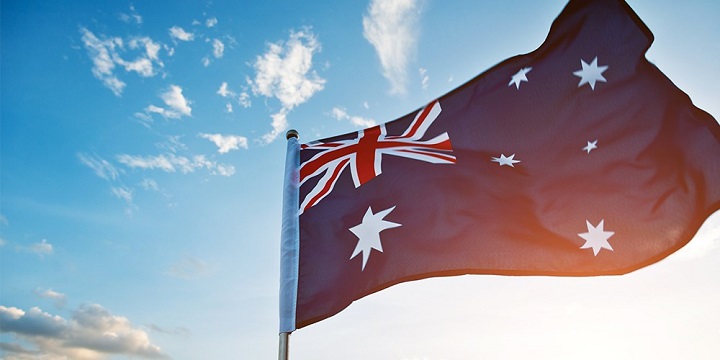
Undoubtedly, any Australian patriotic organisation requires the Australian National Flag as a cornerstone of its identity and mission. With its deep blue field adorned by the Union Jack, the Southern Cross, and the Commonwealth Star, this flag embodies the nation’s history, unity, and values.
It serves as a powerful symbol of national pride, symbolising freedom, democracy, and diversity. Whether flown at official ceremonies, community events, or proudly displayed in homes and offices, the Australian National Flag unites Aussies across the country and around the world, fostering a sense of belonging and patriotism in all who witness it.
Australian Aboriginal Flag
The Australian Aboriginal Flag holds profound significance for any Australian patriotic organisation, embodying the rich heritage and cultural identity of Indigenous people. Its design reflects deep symbolism: the upper portion, black, represents Indigenous people, while the red below symbolises the earth and the ceremonial significance of ochre. At the flag’s centre, a yellow circle represents the sun.
Flown during Indigenous celebrations, protests, and cultural events, the flag serves as a potent reminder of the country’s ancient roots and the resilience of its people. It fosters unity, respect, and reconciliation, inspiring all Aussies to honour and preserve the traditions and wisdom of the land’s original custodians.
Torres Strait Islander Flag
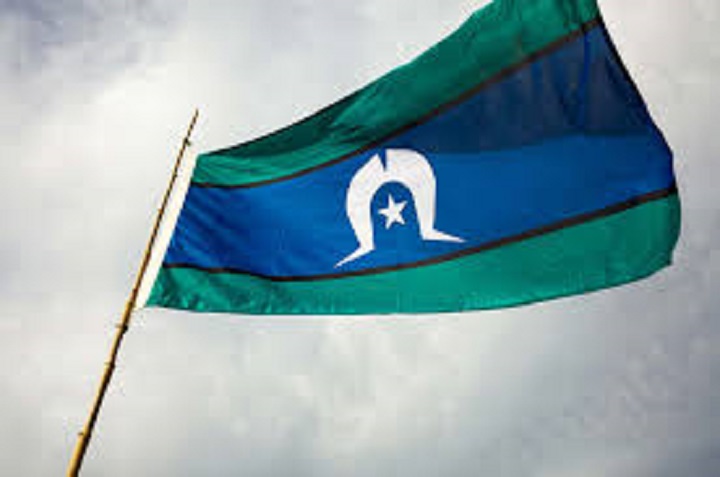
The Torres Strait Islander Flag is flown during cultural events, celebrations, and ceremonies, symbolising the unique identity and heritage of the Torres Strait Islander people. Its vibrant blue and green horizontal stripes represent the sea and the land, reflecting the strong connection between the Islanders and their environment.
The black lines between them symbolise the Islanders themselves, while the white headdress in the middle stands for peace, unity, and spirituality. With a white five-pointed star (an important symbol for navigating the sea) representing the five main island groups, the flag proudly reflects the Islanders’ pride, unity, and cultural strength.